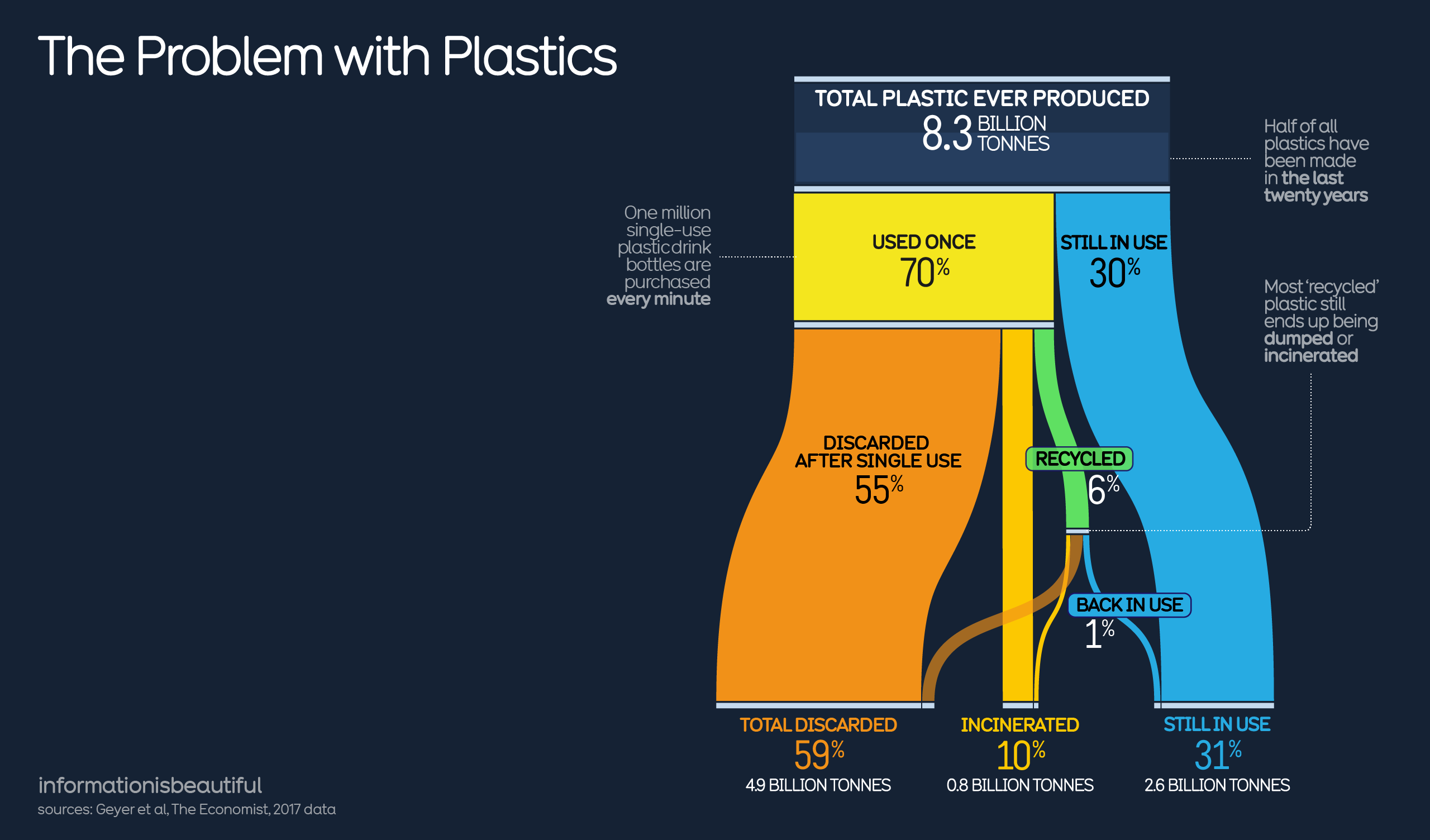The amount of plastic that gets recycled varies significantly depending on geographical locations, infrastructure, and public awareness. In many parts of the world, the recycling rates for plastic are lower than desired. Despite efforts to promote recycling, a substantial amount of plastic still ends up in landfills or in the environment, contributing to pollution. Challenges in the recycling process, such as the complexity of separating different types of plastic, limited recycling facilities, and the lack of standardized recycling systems, contribute to the overall low recycling rates.
This infographic highlights the dishearteningly low percentage of plastic that undergoes recycling. The information depicted in "The Problem with Plastics" infographic was crafted by Information is Beautiful, visually presenting data sourced from Geyer et al.'s study in Science Advances.
Approximately 6% of the world's plastic has been recycled, 10% has been incinerated (0.8 billion tonn), and the remaining 59% (4.9 billion tonn) has accumulated in landfills or the natural environment. It's essential to note that these figures can change over time as recycling efforts and infrastructure evolve.
If you want to learn more about plastic pollution, have a look at the following books:

This post may contain affiliate links. As an Amazon Associate, I earn from qualifying purchases.
Comments
Post a Comment